The UNESCO-listed Archaeological site of Ancient Delos in Greece is an incredibly unique place. Here’s how to visit Delos island in the Cyclades, and why it was so important in the ancient world.
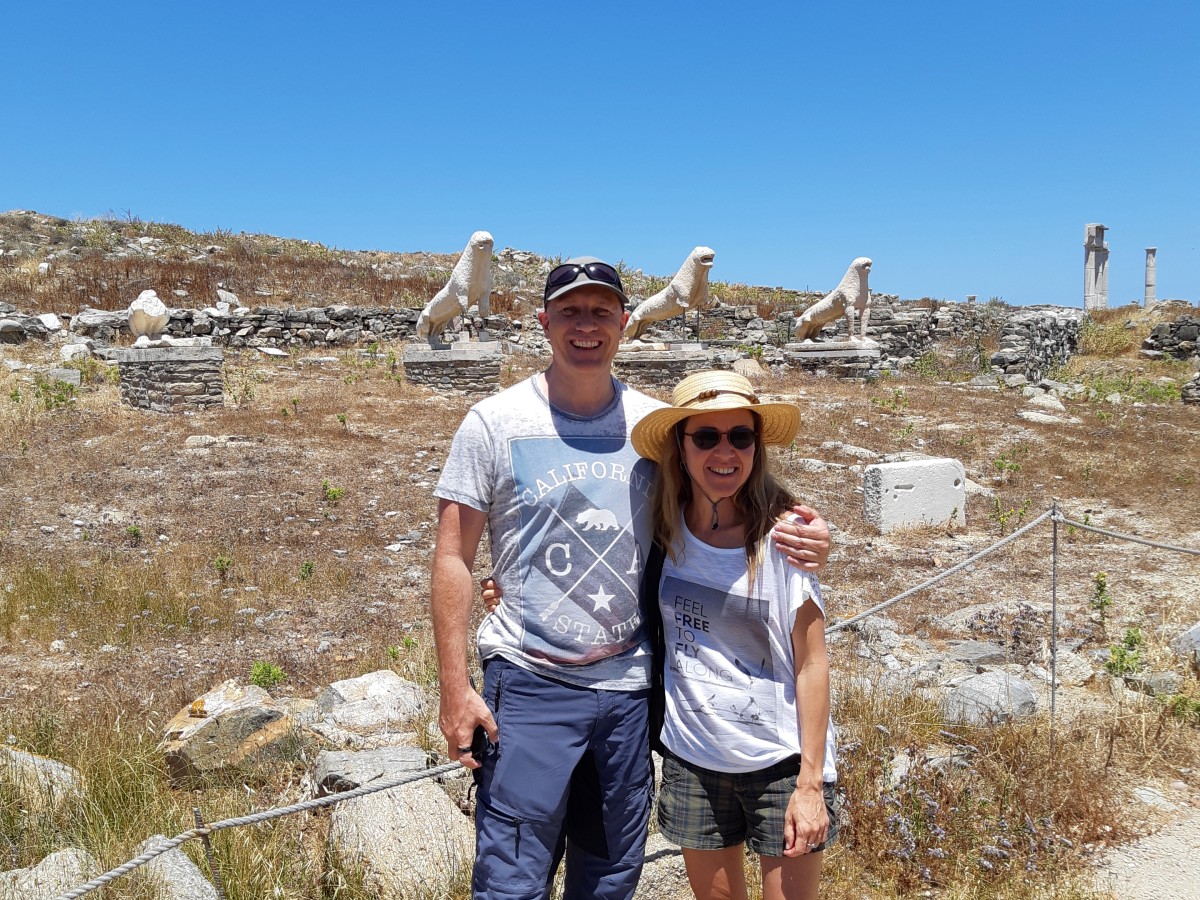
Where is the archaeological site of Ancient Delos
Delos is a small islet in the Cyclades group of islands in Greece. It has a rich and intriguing history, and is a UNESCO World Heritage site, protected for its historical value and cultural significance.
In ancient times, Delos was one of the most important religious and trade centers in the known world. According to Greek mythology, it was the birthplace of the Greek gods Apollo and Artemis, and was a sacred sanctuary.
Today, visitors can explore its ruins, including temples, houses, shops and theater. Apart from a few archaeologists who live and work there, Delos is uninhabited. Swimming and overnight stays are not allowed.
Accessible only by sea, Delos is easiest to reach from Mykonos, but there are connections with other islands, like Paros and Naxos. Its remote setting, ancient ruins, and museum make it a fascinating window into Greece’s distant past.
I’m Vanessa from Athens and have been to many ancient sites in Greece. I took a guided tour in Delos a couple of years ago and was completely blown away by its history!
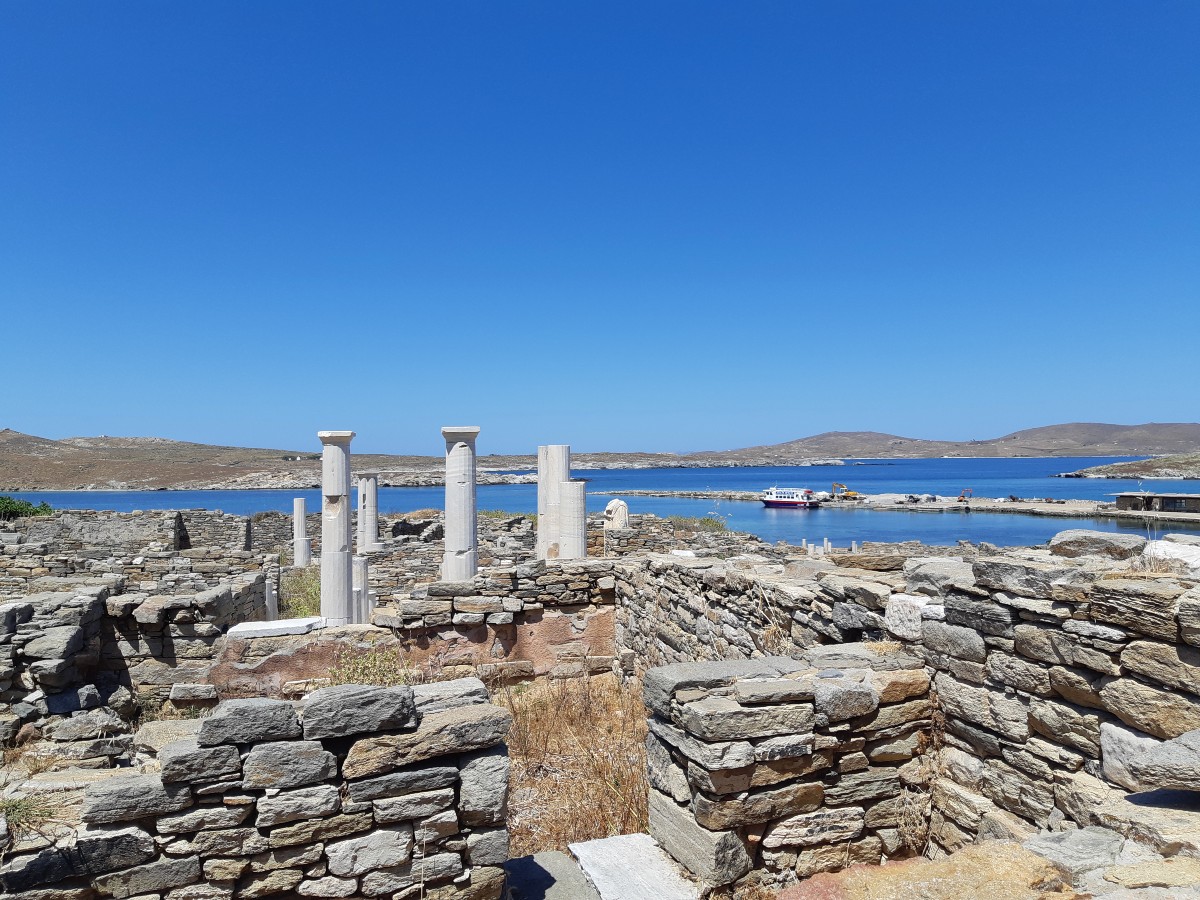
How to get to Ancient Delos in Greece
The easiest way to get to Delos, especially if you have limited time, is on an organized guided tour. There are a number of Delos tours that you can take from Mykonos, such as the following:
- Sailing cruise to Delos and the uninhabited Rhenia island, with lunch and time for swimming (6 hours)
- Small group sunset cruise to Delos and Rhenia (5 hours)
- Morning Delos guided tour (4 hours)
- Evening Delos guided tour (4 hours)
It is also possible to visit Delos on sailing trips departing from Paros or Naxos. These cover transportation by boat, but do not include a guided tour of Delos:
- Full-day boat trip from Paros / Naxos to Mykonos and Delos (9 hours)
- Full-day cruise from Paros to Mykonos and Delos (9 hours)
If, like many people, you are prone to sea sickness, please check the weather on the day before your boat trip. The Cyclades can be fairly windy, even in summer – here’s some info on the meltemi winds.
How to visit Ancient Delos on your own
If you are in Mykonos, you can also visit Ancient Delos on your own. You’ll need to take a small passenger-only ferry, that runs between Mykonos Old Port and Delos. Upon arrival to Delos island, you can get your ticket for the archaeological site and the museum.

My partner and I visited Delos outside peak season, so it was easy to buy our boat tickets on the spot. If you are visiting in peak season, you might want to pre-book as it’s a popular day trip from Mykonos.
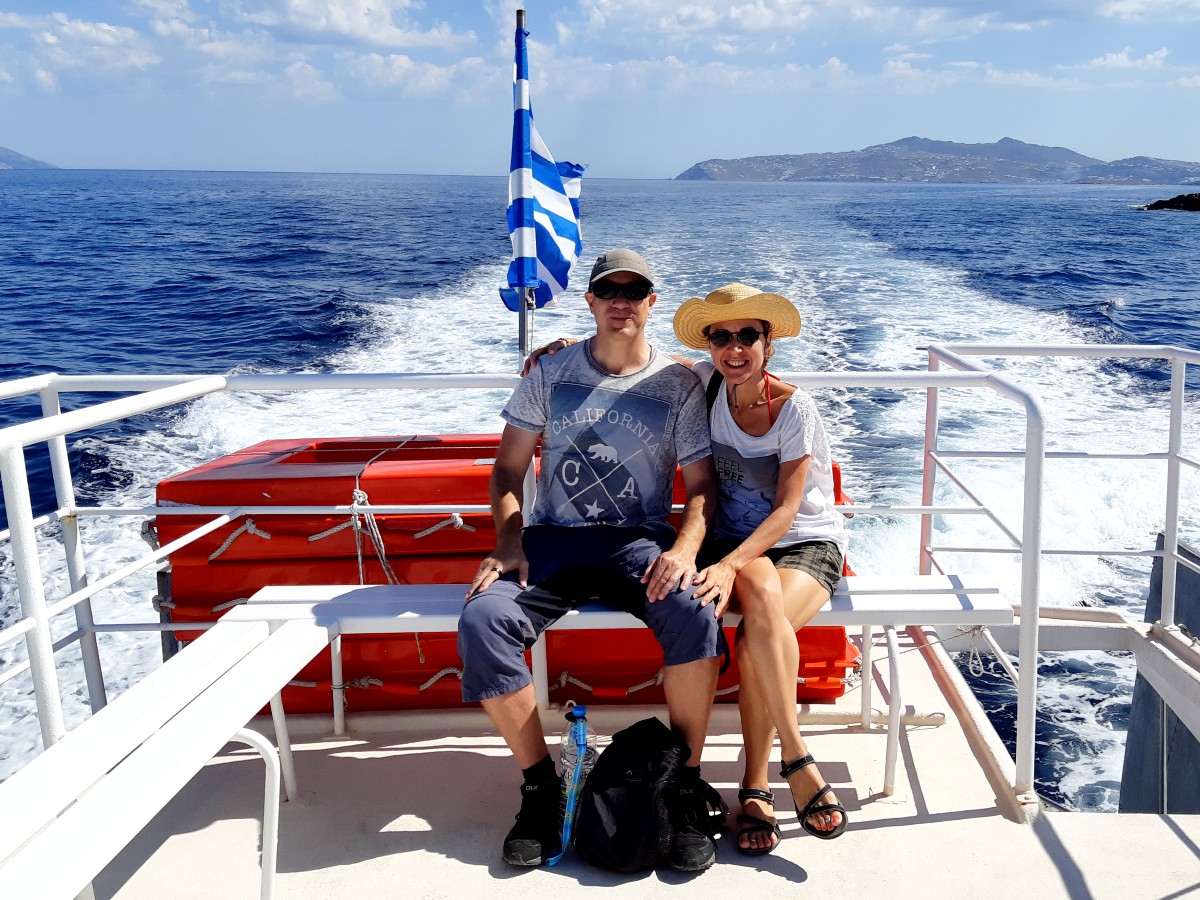
Do I really need a guided tour of Delos?
Understanding what you are seeing while walking around Ancient Delos will take a lot of imagination.
In my opinion, certain ancient sites in Greece can be visited without a guide, but Delos really deserves a guided tour. This is what we did ourselves.

We were lucky to have a private tour with Antonis Pothitos. He is a friendly, knowledgeable tourist guide born in Naxos. We walked around Delos together, and Antonis pointed out several details that we would have never guessed ourselves.
Meeting him was a great introduction not only to Delos, but also Mykonos, where he lives, and Naxos, his homeplace. I’m not surprised that Rick Steves recommends him!
Antonis explained why Delos had fresh water during the ancient times, when the Aegean islands were attached to today’s mainland Greece. Underground rivers brought rain water from the mountains to wells all around the Cyclades. These rivers remained intact, even after the islands were formed and separated from the mainland.
This is how many of the Cyclades islands have fresh water wells, even today!
Tips for visiting Delos island Greece
The archaeological site of Delos is only open to the public between April and October. It remains closed on Easter Sunday and 1st May, which are public holidays. The site remains open from 8:00 to 20:00 from April to August, and closes earlier in September and October.
Apparently, Delos is in a unique position in the Aegean, which makes it even sunnier than most of the other Cycladic islands. We took a morning tour in June, and the sun was scorching throughout our visit!
If you are in Mykonos for a few days, I suggest that you take an evening Delos guided tour. Not only will it be relatively cooler, but there will also be fewer visitors.
Wear comfortable shoes and a wide-brimmed hat, and consider wearing a long-sleeved top, or at least bring some sunscreen. Apart from when you are inside the museum, there is very little shade in the ancient site. I had to reapply sunscreen twice on my legs and arms as I was getting burnt!
Also, take plenty of water with you, and maybe even a piece of fruit or snack, as it’s easier than having to buy any on the island.
Last thing – once you arrive in Delos, there are only a couple of toilets next to the ticket office, and a few more in the museum. Since most guided Delos tours take about three hours, my suggestion is to try and use the toilet on the ferry if you can. Otherwise, expect to queue.
In fact, Delos is one of the best Greek islands to visit in October, when there are fewer crowds and temperatures are lower. Next time I visit, I’m going in October!

Why is Ancient Delos so important?
Many millennia ago, a few distinct civilizations appeared around the area that we know as Greece today.
You may be familiar with terms such as Mycenaean civilization, Minoan civilization, or Cycladic civilization. These all flourished during the Bronze Age, from around 3,200 to 1,100 BC.
Certain Cyclades islands, like Milos, Syros, Naxos and Andros, have been inhabited for several millennia. There is evidence that the first settlements appeared in Delos at around 2,500 BC.
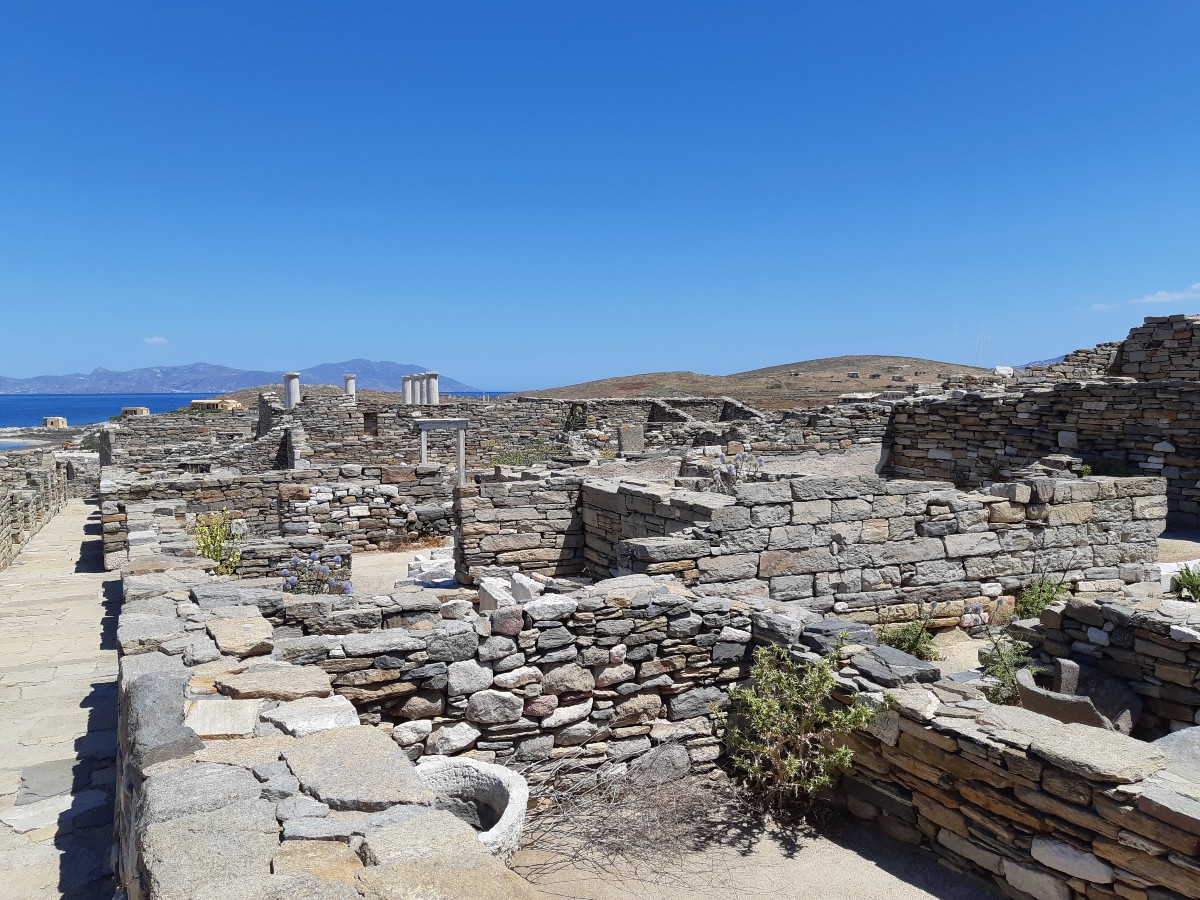
Delos owes much of its significance to the sanctuary of Apollo which was built there as a tribute to the ancient god. This led the island to become an important place of worship during the ancient times.
There were many more sanctuaries of Apollo around Greece. The most famous one being in Delphi, which was considered to be the centre of the ancient world.
Delos – The birthplace of Apollo and Artemis
According to Greek mythology, Delos was the birthplace of Apollo and Artemis, the twin Olympian gods. The two popular deities were the children of the almighty Zeus and the goddess Leto, who was a daughter of Titans.
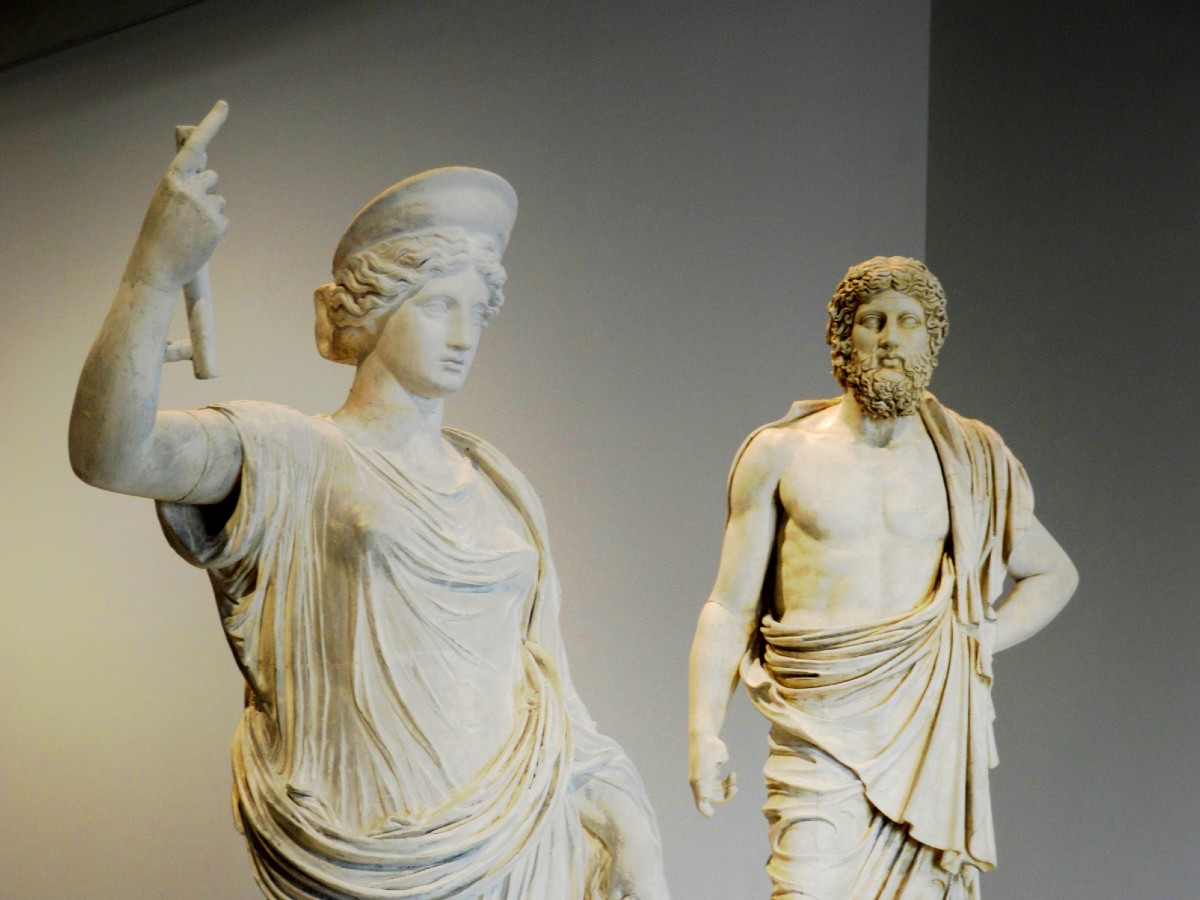
Unfortunately for Leto, Zeus’ wife Hera found out about her illegitimate pregnancy. She then forbade her to give birth on land, or “anywhere under the sun”.
Leto wandered for a long time around several areas in the Mediterranean, including Crete, Athens, Skopelos, Thessaloniki, Karpathos and Asia Minor.
Exhausted, Leto finally reached Ortygia, a floating island drifting around the Aegean. After nine long days of labour, she managed to give birth to the two Olympians.
Since then, the island of Ortygia remained grounded and was renamed to “Delos”, meaning “bright” or “lucent”. This is a word connected with Apollo, the God of Light, for whom a sanctuary was built on the island.
The islands around Delos were named “Cyclades“, as they formed a cycle (circle) around it.

There are several legends around the birth of Leto’s children. According to a popular version, Zeus asked Poseidon to help build a tholos over Ortygia / Delos, in order to create a sunless space.
Another narrative explains that Hera was keeping the goddess of childbirth, Eileithyia, in Olympus. The goddess was summoned to help with Leto’s delivery, but Hera refused to let her go. She eventually changed her mind when she was offered a magnificent necklace made of gold and amber, moulded by Hephaestus.
The importance of Ancient Delos
The Sanctuary of Apollo gained significance after the 8th century BC, and Delos became a popular place of pilgrimage. People travelled from all around the Ancient Greek world to pay their respects to the twin deities.

In 478 BC, after the Persian Wars, an alliance of over 300 Greek city-states was formed. Its purpose was to help liberate or defend various Greek cities from the Persian rule.
While this alliance was led by the city of Athens, its treasury was initially kept on the sacred island of Delos, and was therefore named “the Delian League”.
In 454 BC, the treasury was transported to Athens, which reinforced its position as the dominant power in the League.
The Athenians were now the rulers of Delos. They commanded that no births or deaths take place on the island, in order for Apollo’s sanctuary to remain pure. All the existing graves were moved to the nearby island, Rhenia.

Delos, however, maintained its importance, not least because of the Delian Games. This was a festival happening every 4 years, similar to the Olympic Games. The Delian Games were dedicated to Apollo, and they consisted of cultural and sports events.
Ancient Delos reaches its peak
From the 3rd century BC, Delos became an independent city-state. The Romans conquered the island in 166 BC, declaring it a tax-free port. Gradually, Delos became a massive commerce hub.
The favourable tax system attracted people from all around the Roman Empire. There is evidence that people travelled here from areas as far as Syria, Cappadocia or Egypt.

Bankers, merchants, shipowners and other rich people of the times came to live here. Designers, builders and other craftsmen followed suit.
They built lavish, multi-storey mansions with impressive mosaic floors among the extended markets, temples and public buildings.
It is estimated that, at some point, over 30,000 people from different areas of the world lived harmoniously on the island. Delos became a multicultural city-state, maybe the first of its kind in Europe.

By comparison, the current population of Mykonos is no more than 20,000 people. I found it very difficult to imagine where all these people lived, even with the tall houses!
Nothing lasts forever though. In 88 BC, Delos underwent an attack by Mithridates VI of Pontus, which was followed by a pirate raid in 69 BC.
Later attacks by Slavs and Saracens heavily affected the island, which never went back to its former glory. Delos declined over the next centuries, until it was completely abandoned.
Excavations in Delos island
Several travellers visited Delos during the Ottoman Rule. According to their accounts, the island was in complete ruins, inhabited only by rabbits and snakes. At the time, there was no evidence of running water, which was abundant in the ancient times.
For more information and some fascinating photos and sketches, check out this excellent book.

In 1873, archaeologists from the French Archaeological School came to Delos to begin excavations on the island. Many of the significant buildings in Ancient Delos were excavated in the early 20th century. Works have been ongoing ever since, with a few breaks now and then.
As often happens in Greece, many of the materials originally used for the ancient mansions were looted in later centuries. A lot of the marble has been used for other constructions around other Cycladic islands.
Statues and other artefacts have been moved to museums in Greece and the rest of the world.
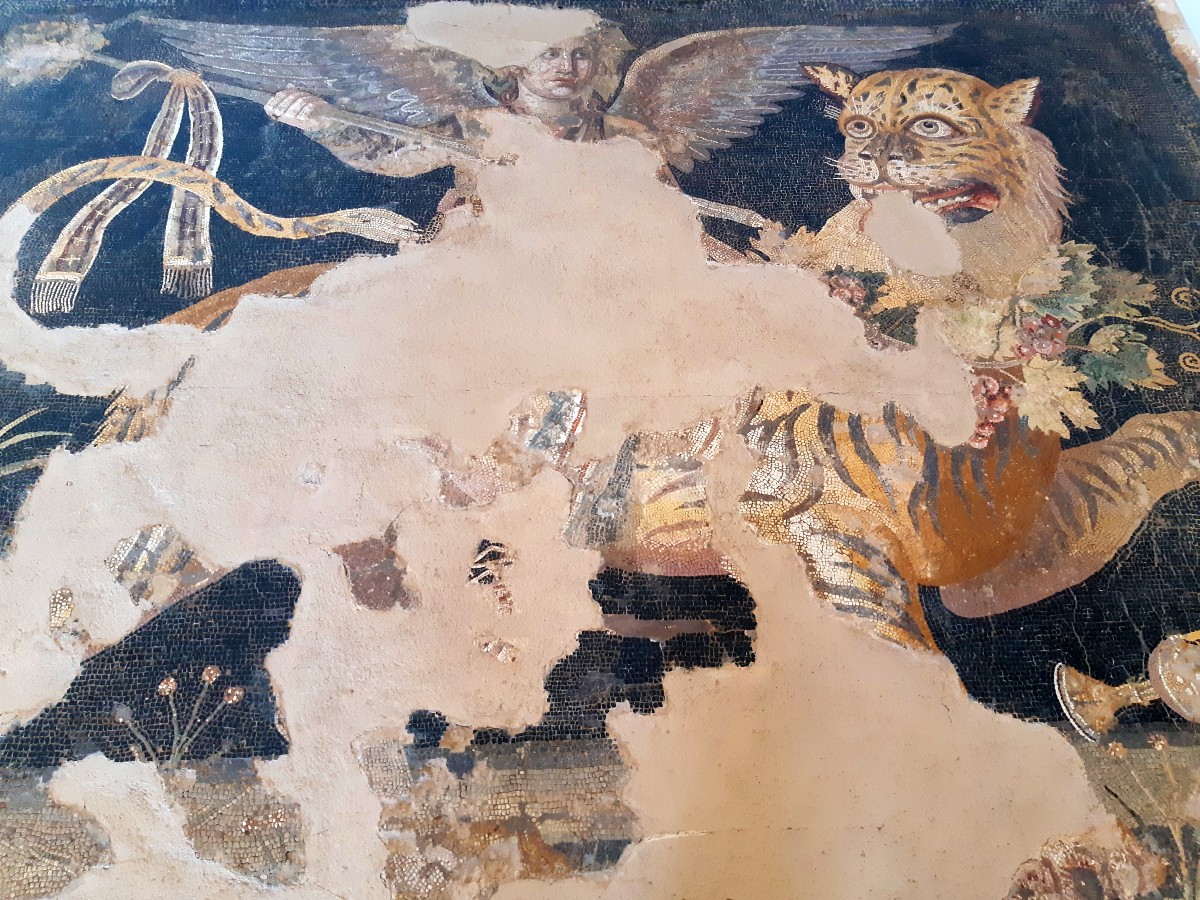
In 1990, Delos was added to the list of UNESCO World Heritage Sites. The excavations are still ongoing, and you will notice the temporary houses where the archaeologists live.
Incidentally, those first archaeologists back in the 1870s had to stay somewhere close to Delos. This is pretty much how tourism started in Mykonos!
What does the archaeological site of Delos look like today?
Imagine a small, sun-drenched, isolated island right in the middle of the Aegean, a half-hour’s ferry ride from the cosmopolitan Mykonos.
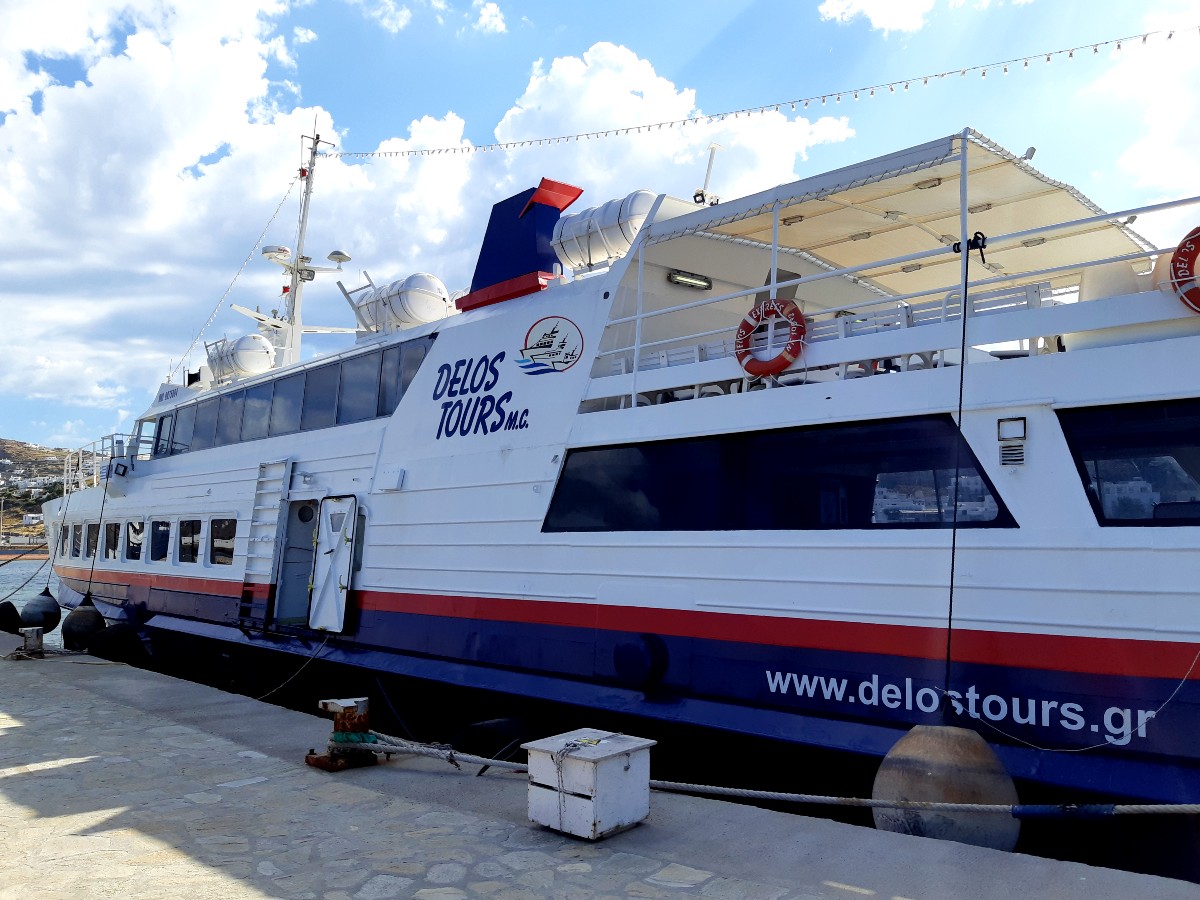
Delos island is around 5 km long and 1,3 km wide, and is fairly flat. Kynthos, the highest mountain, is only 113 metres tall. {Remember that 30,000 people were living there at some point. I still can’t get my head around this number!}
The landscape in Delos is wild, rocky and arid, perhaps even uninviting. There are very few trees, but there are many low bushes that are so typical of the Cyclades.

Between the bushes and rocky patches, you will discover a lot of the ancient civilization which has been restored. You will see stones, walls and mosaic floors, along with statues and ancient Greek columns.
You may also spot the occasional sheep, goat or cat.
What to see in Ancient Delos Greece
There are many important landmarks on the island. These include the Agora of the Competaliasts, the Sacred Way, the Propylaia, the House of The Naxians, the Agora of the Italians and the famous Delos Lions.
Not far from the port, you can see a large piece of marble. This is a 32-ton base where a gigantic statue of Apollo once stood. Τhe statue, known as the Colossus of Naxos, was around 9,5 metres tall.

As the phrase suggests, both the base and the statue were made of the same material. Over the centuries, the massive statue was broken into pieces and partly destroyed.
Dionysus House and the House with the Dolphins are two of the most luxurious residences . The amazing mosaic floors will definitely catch your attention.

The Archaeological Museum of Delos hosts many interesting exhibits, including statues, utensils and jewellery from the ancient times.
You will also notice the various phallic symbols, that were used to keep evil away. They were also a symbol of prosperity and fertility. In fact, if you look closely, you will see them on many walls, all around the island.

Talking about good luck talismans, have a look at this article about the Greek evil eye culture.
FAQs about Ancient Delos
Here are some questions visitors often ask:
What happened Delos?
Delos reached its peak during the Roman Era. Subsequently, it was raided by Mithridates VI of Pontus, pirates, Slavs and Saracens, and was eventually abandoned.
What is the Delos in ancient Greece?
Delos is one of the Cyclades islands in the Aegean Sea in Greece. It is known for its advanced civilization and supreme power during the Roman Era.
Why did Delos become uninhabited?
Towards the end of the Roman Era, several conquerors attacked Delos, and the once powerful island was completely abandoned.
Can you stay on Delos island?
Staying overnight on Delos island is prohibited. The only people who live there are the archaeologists who work on the excavations.
Is the island of Delos real?
Not only is the island of Delos real, but it is also a famous UNESCO World Heritage site.
The archaeological site of ancient Delos
I hope you have enjoyed reading this article about Ancient Delos in Greece. If you have any more questions, feel free to ask in the comments section below!
Interested in more Ancient Greek sites? Check out these other guides:
- All the ancient sites in Athens
- The site of Ancient Mycenae
- The theatre of Ancient Epidaurus
- The Ancient site in Olympia
- Top Archaeological Sites in Greece
- Ancient Greek theatres
- The Delphic Maxims
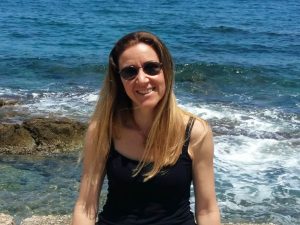
Hi! I am Vanessa from Athens, and I fell in love with Ancient Delos. I would strongly suggest visiting the fabulous archaeological site with a licensed guide. You will then be able to fully understand the importance of the tiny island during the ancient times. Please follow me on my social media:
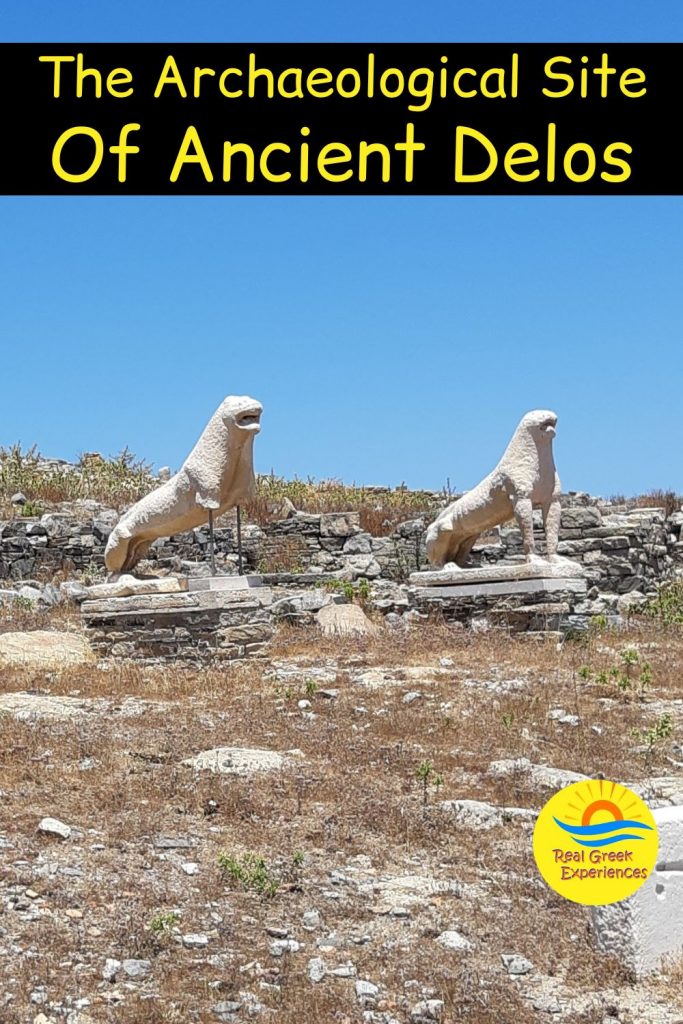

Delos is one of the most unique places to visit in all of Greece. There’s so much history here, it’s a great place to soak it all up. It’s an easy day trip from islands like Santorini, too.